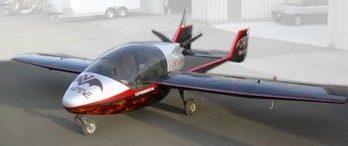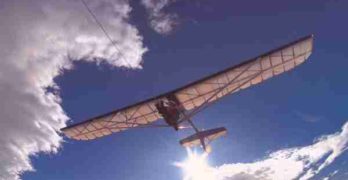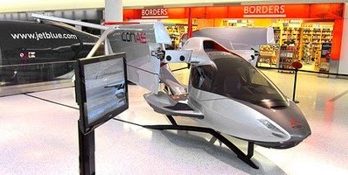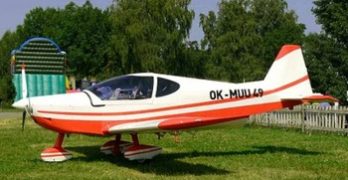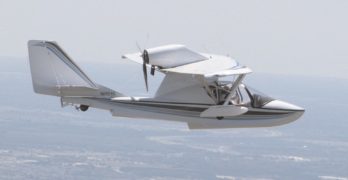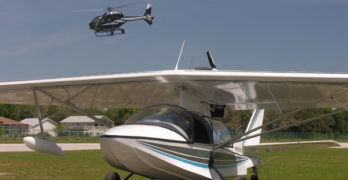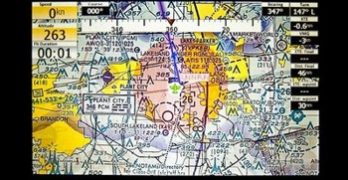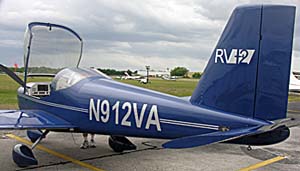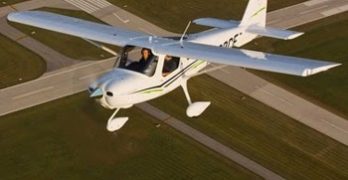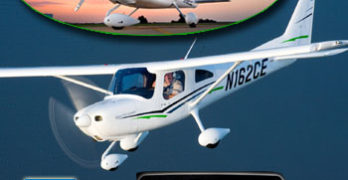I’ve had my head buried in pilot reports, image processing and P&P’s 2010 LSA Buyer’s Guide. Guides in particular never seem like they’ll be such a mind-numbing chore yet every time the same number of eyeball-jittering, typing finger-stiffening days roll by. Look for it in the Oshkosh issue, late June I think. *** There are 107 registered LSA models on the books. I couldn’t write about all of them so went with the top-selling 20, realizing even then some great airplanes get left out, so I factored in another couple dozen or so that stand a good chance of garnering market share in the future. *** Most if not all The Magnificent 107 remain in some state of production – a minor miracle given our sluggish economy. Even more new designs approach ASTM certification this year. Clearly it’s going to be a big pie — with a lot of small slices — for a long time to come.
Search Results for : Flight Design
Not finding exactly what you expected? Try our advanced search option.
Select a manufacturer to go straight to all our content about that manufacturer.
Select an aircraft model to go straight to all our content about that model.
U.S. Aviation — SuperFloater
Winner of the Outstanding New Design award in its public debut at Sun ‘n Fun ’95, the SuperFloater was a well-received by many who flew with the ultralight glider. The light weight unpowered machine is a 20-years-later redesign of an aircraft created by Larry Hall and Klaus Hill in the mid-’70s. The SuperFloater was completely redone at the request of U.S. Aviation, who sensed the new market for the easy-flying glider – aging hang glider pilots, as well as ultralight pilots looking for a change of pace from power in flight.
The ’95 SuperFloater has a beefed-up airframe for more frequent duty and tow launching. The high-dihedral wings were flat and flattened and the span extended for additional performance. Full-span ailerons replaced rudder and elevator-only controls. The ultralight sale plane is now supplied as a ready-to-fly, test-flown aircraft.
The SuperFloater can be towed aloft by almost any ultralight with an excess of power.
ICONographic Marketing
I thought I’d share a couple interesting videos recently posted on the Icon Aircraft website. There’s a multimedia gallery of high-profile, appealing eye candy, including YouTube videos chronicling various aspects of the ongoing test program for the company’s A5 amphibian S-LSA. *** Two I found particularly interesting: a stall sequence and a potpourri of recent flight test ops. *** First, the stall sequence shows the classic tufted airflow indicators taped to the wing to demonstrate inflight stall progression from the root outward. *** Watch the tufts near the root begin to wiggle and change direction first, demonstrating loss of lift. Then see the stall move outward from the root and along the trailing edge. To my eye, it seems like the middle of the wing completely stalls before the root. I’d like to know about the aerodynamic significance of that, and why the wing doesn’t stall more classically at the root first.
New Purpose-built LSA
Another LSA (and another from Czech Republic!) is about to land on our shores. It’ll be featured in my Cool Stuff overview story in the June issue of P&P, but here’s a sneak preview of the cute little low wing, and why I think it could be a winner for potential owners. *** It’s called Corbi Air Alto 100. *** Two veterans of the sport aircraft biz – Dan Coffey and Ron Corbi – have extensive backgrounds in sport aircraft maintenance and marketing. They saw through direct experience that many LSA had weak points that came out after extensive use in the field: insufficiently sturdy nosegear, cheap foreign tires (that were also a problem to reorder quickly). *** So they went to an established Czech manufacturer (Direct Fly) and asked them if they’d be willing to update their four-year-popular Euro bird with American components for ASTM-certification as an S-LSA for the states. *** Coffey’s and Corbi’s approach might be called “pre-emptive” maintenance – they intend to design out the very things that tend to fail in LSA. *** “Our focus with the Alto is to enhance the ‘maintainability’ of the airplane,” Coffey told me in a lengthy chat at Sun ‘n Fun.
New SeaRey: Popular Amphib Goes LSA
Let’s be honest. We’re into flying because we enjoy the experience,
right? Flying light, sporting aircraft is not about flying to work
or transporting goods or people. And if enjoyment is the main
flying goal, then seaplanes are a big part of that pleasure.
Of the LSA-qualified seaplanes covered this year (FPNA Cape Town A-
22 and Airmax SeaMax), the SeaRey is more familiar to readers of Light
Sport and Ultralight Flying magazine and more affordable. The SeaRey
is familiar because of its past in this community. It’s built and it flies as
you’d expect, more so than some $135,000 carbon fiber speedster. It also
costs a great deal less and it’s available as a kit to save even more
dough.
Make no mistake. The SeaRey
LSX (the Experimental-LSA kit
version) and the SeaRey Sport
(the fully-built version in latter
stages of certification) are
advanced light planes, by which I
mean SeaRey has developed significantly
from its simpler 2-
stroke-powered early models.
SeaRey… American-Made Amphibian
SeaRey Sets a New Standard for Floatplanes
Many pilots who have flown in water-borne aircraft believe this is the
finest and most enjoyable flying one can do.
If that statement holds water (is true), then the beautiful SeaRey amphibian
from Florida-based Progressive Aerodyne should be one of the most desirable
aircraft you can buy.
Pilots have spoken with their money. Since it arrived on the market in 1992,
the SeaRey has sold in increasing numbers each year.
Three years of Progressive Aerodyne history hardly tells the story behind
the SeaRey. A father and son ownership team, Wayne and Kerry Richter have
long experience in this business producing many hundreds of amphibious
ultralights.
The Richters were principals in a company called Advanced Aviation best
known for its amphib sea plane called the Buccaneer. After another designer
made the first single place Buccaneer, Kerry Richter made his name with a
two place model.
Cool Sectional Map-Based Portable GPS
Hands down my favorite of the entire Sun ‘n Fun show was the iFly 700 GPS which has nothing to do with the iPhone but is, for pilots, just as cool for its innovative features and really affordable price: $499! *** Super easy to do a flight plan: Tap an airport with your finger on the screen and menus pop up to select a waypoint or as your final destination. *** Never buy another sectional; they’re continually updated as part of the $69/year subscription service, which also includes IFR enroute charts and lots of other features. *** The company owner/designers told me there will be some eye-popping software upgrades coming down the pike. These guys have the programming mojo — one designed the Orbitz travel site for example. *** It comes with a suction mount, power cords, remote, carrying case and tons of features. *** Watch this company, it could be the beginning of a major product for in flight navigation.
Flying the Van’s Aircraft RV-12
While lots of attention was paid to the PiperSport at Sun ‘n Fun 2010, and while Cessna’s Skycatcher remains the dominant collector of order deposits, another legacy producer that has entered the LSA sector is Van’s Aircraft. *** By most reckoning, Van’s can lay claim to being the largest kit aircraft company in the world. Their LSA-sized RV-12 represents another indication that major manufacturers see merit in Light-Sport Aircraft. I finally got a flight in this new model; my full report will appear in a future issue of Plane & Pilot magazine but here are some sample bits. *** Most simply put, RV-12 is a Van’s. My experience in a RV-4 and -9 — plus affirmative comments from folks with much more RV experience — confirms the same great qualities found throughout the Van’s lineup. These shared characteristics include light responsive controls with ailerons truly pleasant.
Skycatcher Ramps Up Deliveries — Paradise Airbags
Molly McMillin of the Wichita Eagle reports today that Cessna is speeding up its deliveries of the C-162 throughout 2010, after delays were announced early in the year. The announcement was made at the Aero Expo in Germany today. *** McMillin also writes that Cessna veep John Doman believes the piston-powered aircraft market may be stabilizing and could turn around soon to a growth profile, perhaps as early as mid-2011. *** In a related story, Shenyang Aircraft of China, the state-owned manufacturer of the Skycatcher airframe for Cessna, plans to build a new factory to expand its production volume. *** An airport will also be built at the site — but original plans for a mid-2010 opening have been delayed to 2011. *** Future Skycatchers will still be outfitted and test-flown in Wichita. *** UPDATE on Michael Combs “Flight for the Human Spirit” odyssey: he’s off and flying! The nasty Salina, KS weather that kept him on the ground for 3 days broke today and he promptly launched.
Catching Up with Cessna’s Skycatcher Plans
Everyone interested in Light-Sport Aircraft is aware of Cessna’s loss of prototype #1 when it entered an “unrecoverable spin.” After Cirrus Design announced a slowdown in the development of their SRS, people have been wondering if Cessna would alter their plans for Skycatcher. Short answer: No. All is proceeding according to schedule. *** At AOPA Expo 2008, the Wichita giant reported that the now-lost Skycatcher prototype accumulated 220 hours in flight testing. Cessna will enlist their first production model to complete these primary evaluations. A third Skycatcher airframe will undergo various static tests. *** The company remains dedicated to ASTM standards. However, as general aviation’s leading producer, Cessna prefers to go beyond industry consensus standards so they also plan ground vibration tests (which can check for flutter) and airframe fatigue testing. Both employ elaborate test equipment to evaluate an airframe’s integrity and response to repeated in-flight loads.
- « Previous Page
- 1
- …
- 103
- 104
- 105
- 106
- 107
- …
- 147
- Next Page »


